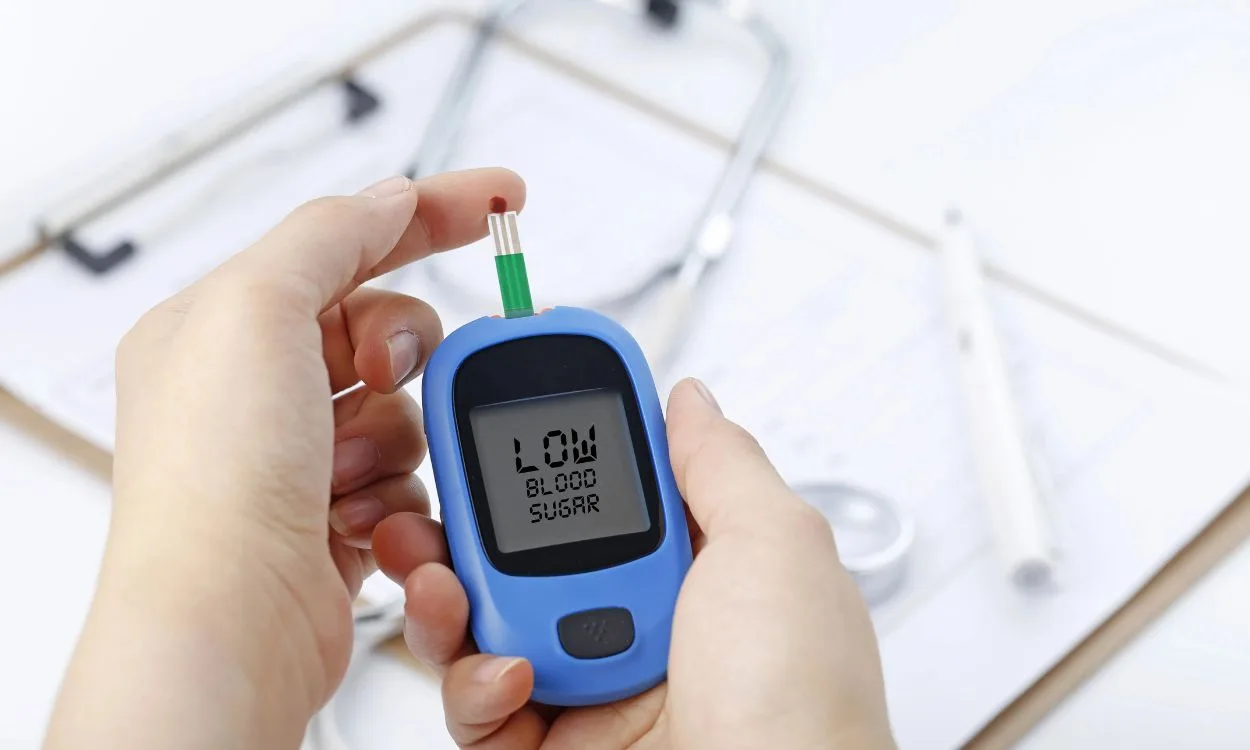Hypoglycemia: Understanding Low Blood Sugar and How to Manage it for a Healthy Life
Introduction
Hypoglycemia, commonly known as low blood sugar, is a condition that occurs when the level of glucose in your blood drops below normal. It can cause various symptoms such as dizziness, weakness, confusion, and even loss of consciousness if not managed properly. In this article, we will explore what to do if your sugar level gets low, first aid measures to take, and the importance of consistency in managing hypoglycemia.
Understanding Hypoglycemia
Hypoglycemia can affect anyone, but it is particularly common in people with diabetes who take certain medications, such as insulin or sulfonylureas. However, non-diabetic individuals can also experience low blood sugar due to factors like excessive physical activity, skipped meals, or certain medical conditions.
Symptoms of Hypoglycemia
Recognizing the symptoms of low blood sugar is crucial for timely intervention. Common signs and symptoms may include:
- Shakiness or trembling
- Sweating
- Palpitations
- Fatigue or weakness
- Anxiety or irritability
- Confusion or difficulty concentrating
- Blurred vision
- Headache
- Hunger
First Aid for Low Blood Sugar
If you or someone you know experiences symptoms of hypoglycemia, it is essential to take immediate action. Here are the steps to follow:
- Check blood sugar level: If you have a glucose monitoring device, check your blood sugar level to confirm if it is low. This step can help rule out other possible causes for your symptoms.
- Consume fast-acting carbohydrates: The goal is to raise your blood sugar quickly. You can do this by consuming 15 grams of fast-acting carbohydrates such as: Avoid foods high in fat or protein as they can slow down the absorption of glucose.
- Glucose tablets or gel
- Fruit juice or regular soft drink (not diet)
- A tablespoon of sugar or honey
- Wait for 15 minutes: Give the carbohydrates some time to take effect and raise your blood sugar level. During this time, avoid vigorous physical activity to prevent further lowering of blood sugar.
- Recheck blood sugar level: After 15 minutes, check your blood sugar level again. If it is still below the target range, repeat the above steps.
- Eat a balanced meal or snack: Once your blood sugar has stabilized, it is important to eat a balanced meal or snack containing carbohydrates, protein, and healthy fats to maintain a steady blood sugar level.
The Importance of Consistency in Managing Hypoglycemia
Consistency plays a vital role in managing hypoglycemia and preventing future episodes. Here are some key practices to incorporate into your daily routine:
- Regular and balanced meals: Skipping meals can lead to low blood sugar. It is important to have regular meals and snacks throughout the day, including a combination of carbohydrates, proteins, and healthy fats.
- Monitoring blood sugar levels: Regularly check your blood sugar levels as advised by your healthcare provider. This will help you identify patterns and make necessary adjustments to your medication or lifestyle.
- Medication management: If you are taking medications for diabetes, it is crucial to take them as prescribed and follow your healthcare provider’s instructions. Adjustments to medication may be necessary based on your blood sugar levels and other factors.
- Physical activity: Moderate exercise is beneficial for managing blood sugar levels. However, it is important to monitor your blood sugar before, during, and after exercise to prevent hypoglycemia. Adjustments in medication or carbohydrate intake may be necessary.
- Communication with healthcare provider: Regularly communicate with your healthcare provider about your blood sugar levels, symptoms, and any concerns you may have. They can provide guidance and support in managing hypoglycemia effectively.
How Fitpaa Can Help
Fitpaa, an end-to-end AI-driven Metabolism monitoring and management technology, can be a valuable tool in managing hypoglycemia and overall health. Here’s how Fitpaa can assist you:
- Metabolism Assessment: Fitpaa offers a comprehensive metabolism assessment to identify the root cause of your health condition, including hypoglycemia. This assessment considers various aspects of your life to provide personalized insights.
- Personalized Fitpaa Capsule: Based on your metabolism, health goals, and lifestyle, Fitpaa prepares a personalized Fitpaa Capsule. This capsule combines medical therapy, medical exercise therapy, medical nutrition therapy, and cognitive behavior therapy to optimize your metabolism and help achieve your health and fitness goals.
- Real-time Guidance and Support: Fitpaa’s real-time guidance technology incorporates habit-building concepts and timely nudges from cognitive-behavioral therapy. This feature helps release hormones like endorphins, dopamine, serotonin, and oxytocin to keep you motivated and inspired throughout the day.
- Fitpaa Mobile App: The Fitpaa mobile app provides essential tools to follow your Fitpaa Capsule effectively. It includes a virtual workout trainer, diet tracker, performance tracking, progress tracking, and more. The app makes it easy to stay on track and monitor your progress.
Conclusion
Managing hypoglycemia requires prompt action, consistency, and personalized support. By following the first aid measures discussed in this article and incorporating Fitpaa’s comprehensive approach to health and fitness, you can effectively manage low blood sugar and achieve your goals. Take control of your health and download the Fitpaa app today to experience the joy of a fit and healthy life.
Note: The information provided in this article is for educational purposes only and should not replace medical advice. If you experience recurrent hypoglycemia, consult a healthcare professional for proper diagnosis and personalized management.









